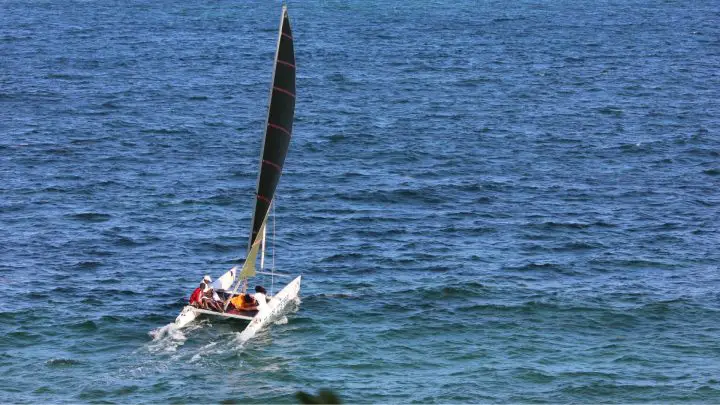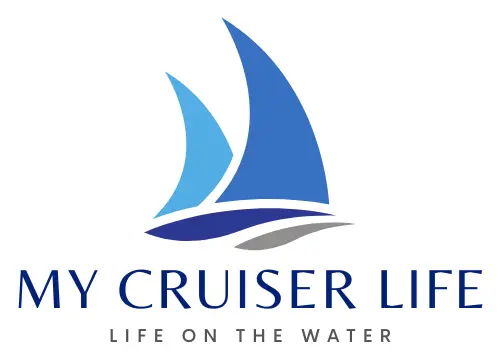Navigating the world of small watercraft can be overwhelming, especially when considering a catamaran dinghy. Many sailors struggle with deciding between traditional monohull designs and the distinct advantages catamarans offer. The frustration of balancing stability, speed, and handling capabilities often leads to costly purchasing mistakes. Let’s cut through the confusion with expert insights on catamaran dinghy selection, performance characteristics, and practical considerations.

Table of Contents
- Key Features and Benefits
- Types of Catamaran Dinghies
- How to Sail a Catamaran Dinghy
- Best Catamaran Dinghies for Beginners
- Maintenance and Care
- Set Sail for Fun!
- FAQs
Key Features and Benefits
Catamaran dinghies pack a punch with features that make them stand out from traditional single-hull boats. If you’re wondering whether these twin-hulled wonders are right for you, check out what makes them special:
- Rock-solid stability thanks to the twin-hull design that keeps you level even in choppy conditions or stronger winds
- Surprising speed despite their stable platform – their streamlined shape and reduced drag let them zip through water efficiently
- Lightweight construction using materials like fiberglass and carbon fiber, making them easy to transport and handle (often manageable with just two people)
- Quick setup with simple rigging systems that get you from trailer to water in minutes
- Responsive handling from advanced rudder systems that provide excellent steering control at all speeds
- Extra deck space compared to monohulls of similar length, giving you more room to move around
- Less chance of capsizing, which means drier sailing and more confidence for beginners
- Versatility for both leisure cruising and exciting performance sailing, depending on the model
Types of Catamaran Dinghies
Racing Catamaran Dinghies
Racing catamaran dinghies like the Dart 16 deliver thrilling performance with lightweight construction designed to slice through water efficiently. The Hobie Dragoon is perfect for intermediate sailors while still offering enough speed for experienced ones.
Recreational Catamaran Dinghies
Recreational catamaran dinghies like the Hobie Wave offer more stable platforms ideal for family outings. The Hobie T2 exemplifies this balance – stable enough for beginners yet responsive enough for skill progression. Their higher volume hulls provide excellent buoyancy in choppy conditions.
Inflatable Catamaran Dinghies
Inflatable cats like the MiniCat 420 pack down into small bags yet inflate into capable sailing platforms. Modern drop-stitch fabrics create rigid structures that perform well in moderate winds. The main advantage: setup in under 30 minutes with no trailer required – perfect for apartment dwellers or travelers.
Rotomolded Catamaran Dinghies
Rotomolded cats like the Hobie Bravo offer exceptional durability. Manufactured from molten polyethylene, these virtually indestructible boats withstand impacts that would damage fiberglass. They’re heavier, limiting top speed, but require minimal maintenance.
Related: 6 Best Inflatable Catamarans: In-Depth Reviews of Top Models
How to Sail a Catamaran Dinghy
Learning to sail a cat is easier than you think! Start by finding US Sailing or American Sailing Association-certified instructors – they’ll fast-track your progress.
Cats handle differently than monohulls. They can’t point as high into the wind, but they’re lightning-fast on a reach. Use the telltales (those little ribbons) on your sails to check if they’re properly trimmed – when they’re streaming horizontally, you’ve hit the sweet spot.
Wind navigation is your bread and butter. Sailing windward (toward the wind) means zigzagging at about 45-50 degrees off the wind. When sailing leeward (away from the wind), you’ll feel that signature catamaran rush!
Weight distribution matters more for cats. In light winds, keep crew weight centered. As the breeze picks up, move the weight backward and to windward to prevent capsizing.
Master two key turns: tacking (through the wind) and jibing (away from the wind). Tacking requires good momentum and decisive turning. Jibing is faster but riskier – control that mainsail throughout the turn!
Best Catamaran Dinghies for Beginners
Hobie Wave
The Hobie Wave has earned its reputation as the gold standard for beginner catamarans. It’s the boat I always recommend to friends just starting their sailing journey.
Price: $4,999 new, $2,000-3,500 used
Key Features:
- Virtually indestructible rotomolded polyethylene hull construction
- Simple, color-coded rigging system gets you sailing in minutes
- Generous beam (5’5″) provides exceptional stability
- Compact 13’9″ length makes it easy to transport
- Self-bailing deck means no bilge pumps or bailing required
- Maintenance-free design with no moving parts in the hull connections
- Standard equipment includes a righting line for easier recovery after capsizing
The Wave’s smaller sail plan won’t overwhelm you in stronger winds, making it ideal for building confidence. You’ll find this model at sailing schools across the country – there’s a reason instructors trust it with complete beginners.
MiniCat 420
For apartment dwellers or sailors without dedicated storage space, the MiniCat 420 is nothing short of revolutionary.
Price: $3,899 new, $2,200-3,000 used
Key Features:
- Inflatable design packs down to fit in a car trunk (two storage bags)
- Assembly time under 30 minutes without special tools
- Surprisingly rigid construction using drop-stitch technology
- The weight of just 95 lbs makes it manageable for one person
- 13’9″ length with stable 5’7″ beam
- Includes pump, repair kit, and storage bags
- Performs well in winds from 5-15 knots
I’ve taken the MiniCat through choppy conditions that would challenge “real” boats and been impressed with how well it handles. The convenience factor alone makes this an excellent gateway into catamaran sailing.
Dart 15/Sprint 15
For beginners with aspirations of eventually racing or performance sailing, the Dart 15 (also known as Sprint 15) offers an ideal pathway.
Price: $4,500-6,500 new, $2,000-3,500 used
Key Features:
- Unique single-handed catamaran design at 15’1″ length
- Kick-up rudder system automatically retracts in shallow water
- Fiberglass construction offers excellent performance with good durability
- Wide 7’6″ beam provides exceptional stability for a performance catamaran
- Self-righting capability when sailed correctly
- Simple rigging with a single sail makes for easy handling
- Optional jib and trapeze available for “sport mode” as skills progress
- Beach wheels are available for easy launching
The Dart 15/Sprint 15 is remarkably versatile – it functions both as a beginner-friendly platform and as a highly competitive racing boat. What makes it special is the ability to sail in “una-rig” mode with just the mainsail for beginners, then advance to “sport mode” with jib and trapeze as your skills develop. With over 2,000 boats produced since its introduction in 1980, it has one of the strongest class associations for racing and community support.
Related: Exploring the 8 Biggest Catamarans for the Ultra-Wealthy
Hobie Bravo
The Hobie Bravo hits the sweet spot for solo sailors looking for simplicity and fun.
Price: $3,799 new, $1,800-2,800 used
Key Features:
- Single sail design eliminates jib management complexity
- Lightweight at 195 lbs – can be managed by one person
- Rotomolded construction withstands beginner mistakes
- 12′ length makes it easy to handle on and off the water
- Built-in cup holders and storage for day sailing comfort
- Optional hiking straps are available as skills progress
- No trapeze or complex systems to master
Think of the Bravo as the “bicycle with training wheels” of catamarans. It delivers authentic catamaran performance and fun with minimal complexity, making it perfect for beginners who want to focus on core sailing skills.
Hobie T2
A favorite at sailing academies nationwide, the Hobie T2 was designed specifically for training.
Price: $5,499 new, $3,000-4,500 used
Key Features:
- Self-righting capability (with proper technique) reduces capsize anxiety
- Rotomolded polyethylene hull construction can handle rough treatment
- Wide, stable platform with exceptional primary stability
- Color-coded rigging system simplifies sail control
- 13′ length balances maneuverability with stability
- The reefing system allows for sailing in varied wind conditions
- Full-length battens in the mainsail improve sail shape and longevity
The T2’s forgiving nature makes it ideal for building confidence quickly. Within a season, most beginners find themselves handling conditions that would have terrified them just months earlier.
Maintenance and Care
Keep your cat purring with proper maintenance and you’ll enjoy seasons of trouble-free sailing. Unlike bigger boats, catamaran dinghies don’t demand endless hours of upkeep, but they do need consistent attention.
Always rinse with freshwater after sailing, especially after saltwater sessions. Salt crystals act like tiny sandpaper particles on your fittings and metal parts. I’ve seen nearly identical cats age years apart – the difference is always in the post-sail routine.
Treat your sails like the engines they are. Never store them damp (hello, mildew!), and consider using 303 Fabric Guard for UV protection. Your trampoline needs love too – clean with mild soap and protect it from the sun’s damage with 303 Aerospace Protectant.
Hull care varies by material. Rotomolded polyethylene (like Hobie Waves) needs minimal maintenance but benefits from UV protectants like Star brite’s polymer sealant. Fiberglass hulls require more attention – regularly check for stress cracks around crossbeam attachments.
Winter storage makes or breaks catamaran longevity. Use a proper-fitting cover, elevate off the ground, and loosen rigging tension. Keep a simple repair kit handy with marine silicone, MetalSet epoxy, spare hardware, and self-amalgamating tape for those inevitable fixes.
Thirty minutes of maintenance after each sail prevents those heart-sinking moments when gear fails just as the perfect breeze fills in.
Set Sail for Fun!
Ready to hit the water? Catamarans offer the perfect combo – awesome stability for beginners and thrilling speed for thrill-seekers! From the beginner-friendly Hobie Wave to the apartment-perfect MiniCat, a twin-hulled buddy is waiting for you. With their quick setup, easy transport, and super-responsive handling, you’ll be zipping across the water in no time. A little TLC after each sail keeps your cat purring for seasons of hassle-free adventures. So grab a friend, find your perfect cat, and discover why sailors everywhere are falling in love with these twin-hulled wonders!
FAQs
What is the difference between a dinghy and a catamaran?
A dinghy is a small, single-hulled boat typically used for recreation or as a tender to larger vessels. A catamaran features two parallel hulls connected by a deck or frame. While traditional dinghies have one hull, catamaran dinghies combine both designs, offering the small size of a dinghy with the stability and speed advantages of twin hulls.
What is the disadvantage of catamarans?
Catamarans can be more expensive than comparable monohulls and often require wider dock space and storage. They may struggle in certain sea conditions where wave action hits between the hulls. Some sailors find them less responsive when tacking, and they typically have reduced interior space compared to monohulls of similar length due to their split-hull design.
What is a mini catamaran called?
Mini catamarans are commonly called “beach cats” or “sport cats.” Popular models include the Hobie Bravo, Topaz Uno, and MiniCat series. These lightweight, portable vessels are designed for easy launching from beaches and provide thrilling performance. Some smaller versions specifically designed for a single sailor are sometimes called “micro cats” or “catamaran dinghies.”
What is the best single person catamaran?
For recreational sailors, the Hobie Bravo and Hobie Wave offer excellent stability and ease of use. The Topaz Uno and MiniCat 420 also receive high marks for solo sailing, with the ultimate “best” choice depending on your skill level, budget, and sailing conditions.
